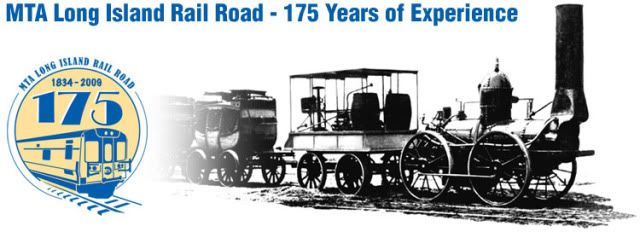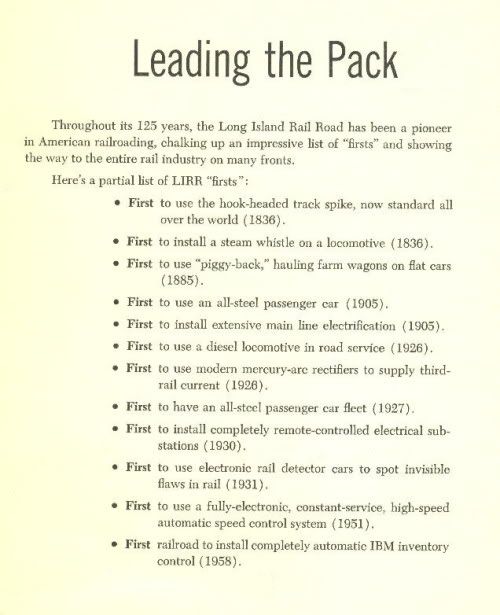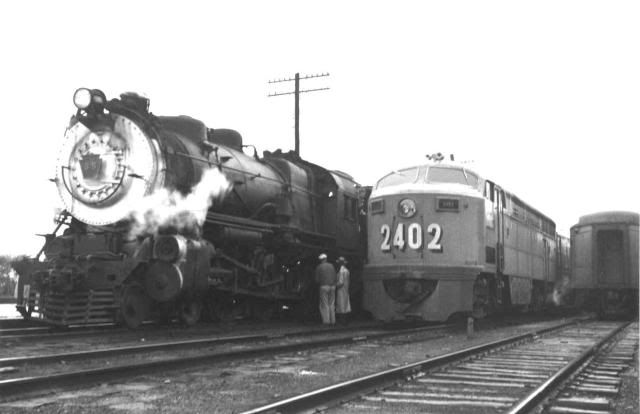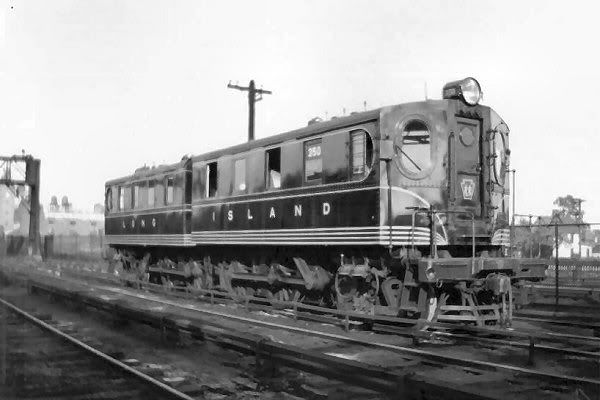
Railroads had been in existence for only nine years when the Long Island Rail Road was chartered on April 24, 1834. Now celebrating its 175th anniversary, the LIRR is the busiest commuter railroad in North America - and the oldest railroad in the U.S. still operating under its original name. There is no doubt that the development of Long Island is directly linked to the growth of its railroad.
The history of what is now the LIRR begins on April 25, 1832 when the Brooklyn and Jamaica RR Company was incorporated and started building its ten-mile long route from the East River in Brooklyn along Atlantic Ave. to Jamaica. Two years later, on April 24, 1834 the Long Island Rail Road Company was formed.
The original purpose of the LIRR was to create a rail/ferry/rail connection from New York to Boston. The route was to be via rail to LI's North Fork then by boat to Stonington, Connecticut where it would continue by rail through Providence and Boston. At that time, engineers had considered it impossible to build a totally overland route through the hills of southern Connecticut. On April 18, 1836 the B&J was completed and immediately was leased by the LIRR, which started laying its own rails east from Jamaica.
Unfortunately, the needs of Long Island itself were ignored and the route chosen was through the vast, level, but mostly unpopulated plains of the center of Long Island, midway between the small, but thriving villages dotting the north and south shores. By 1837 they reached Hicksville, 1841 Farmingdale, 1842 Deer Park, and 1844 Medford. At about the same time, rails were being laid westward from Greenport and on July 27, 1844 the first three trains made the run from Brooklyn to Greenport in an amazing 3-1/2 hours.
Other new lines for the LIRR included Mineola to Glen Head (1864), Glen Cove (1868) and Locust Valley (1875), as well as the extension of the line from Hicksville to Syosset to Huntington (1867), Northport (1867) and Port Jefferson (1873). In addition a line was built from Manor (now Manorville) on the Main Line southward to Eastport then eastward to the Hamptons and Sag Harbor (1870).
In 1880, the LIRR was taken over by Austin Corbin and under him, the railroad prospered and expanded to more-or-less its greatest limits: Patchogue to Eastport (1881), Locust Valley to Oyster Bay (1889), Bridgehampton to Montauk (1895), Port Jefferson to Wading River (1895), Great Neck to Port Washington (1898). In addition, in 1882 the LIRR took over the NY, Brooklyn and Manhattan Beach RR, which had been built in 1876 and part of which presently forms the LIRR's Bay Ridge branch, used for freight only, from Bay Ridge to Fresh Pond, with a now-abandoned spur to Manhattan Beach. In 1893, the remaining Garden City to Hempstead line was repositioned to its present ROW and a new line was built from Valley Stream (the present West Hempstead branch) which connected to it just north of the present Country Life Press station.
In July, 1901 the LIRR took control of the NY & Rockaway Beach RR, which ran from Glendale Junction to Rockaway Park over a long trestle over Jamaica Bay. In 1910, the final portion of this line, from White Pot Junction in Rego Park to Glendale Junction was built.
Major improvements -
* Atlantic Ave. grade elimination of 1901-1905
* Expansion at LIC and Jamaica 1903-1904
* Construction of the East River Tunnels 1903-1910
* Construction of Sunnyside Yards 1903-1910
* Construction of Holban (site of present Hillside Maintenance Facility) Yards 1905-1910
* The Bay Ridge and Manhattan Beach Improvement and Grade Elimination 1905-1915
* Pennsylvania Station 1910
* Glendale cutoff 1908-1910
* Maple Grove (Kew Gardens) realignment and grade elimination 1908-1910.
* The new (present) Jamaica Station 1910-1913
* Syosset/Cold Spring realignment and Grade elimination 1911-1914
* Woodside/Winfield realignment and grade elimination 1913-1915.
* North Shore (Port Washington) branch grade elimination 1911-1931




2 comments:
MASSIVE corruption abound in that organization but worth mentioning it's the only 24 hour commuter railway in the world.
Gino, our great-grandfather put down those tracks [along with many other Italian immigrants that came to this country at the time]. He even hurt his leg doing it. I didn't know if you knew that. Keep the historical features coming. Don't forget George Washington's spy ring (culper ring).
Post a Comment